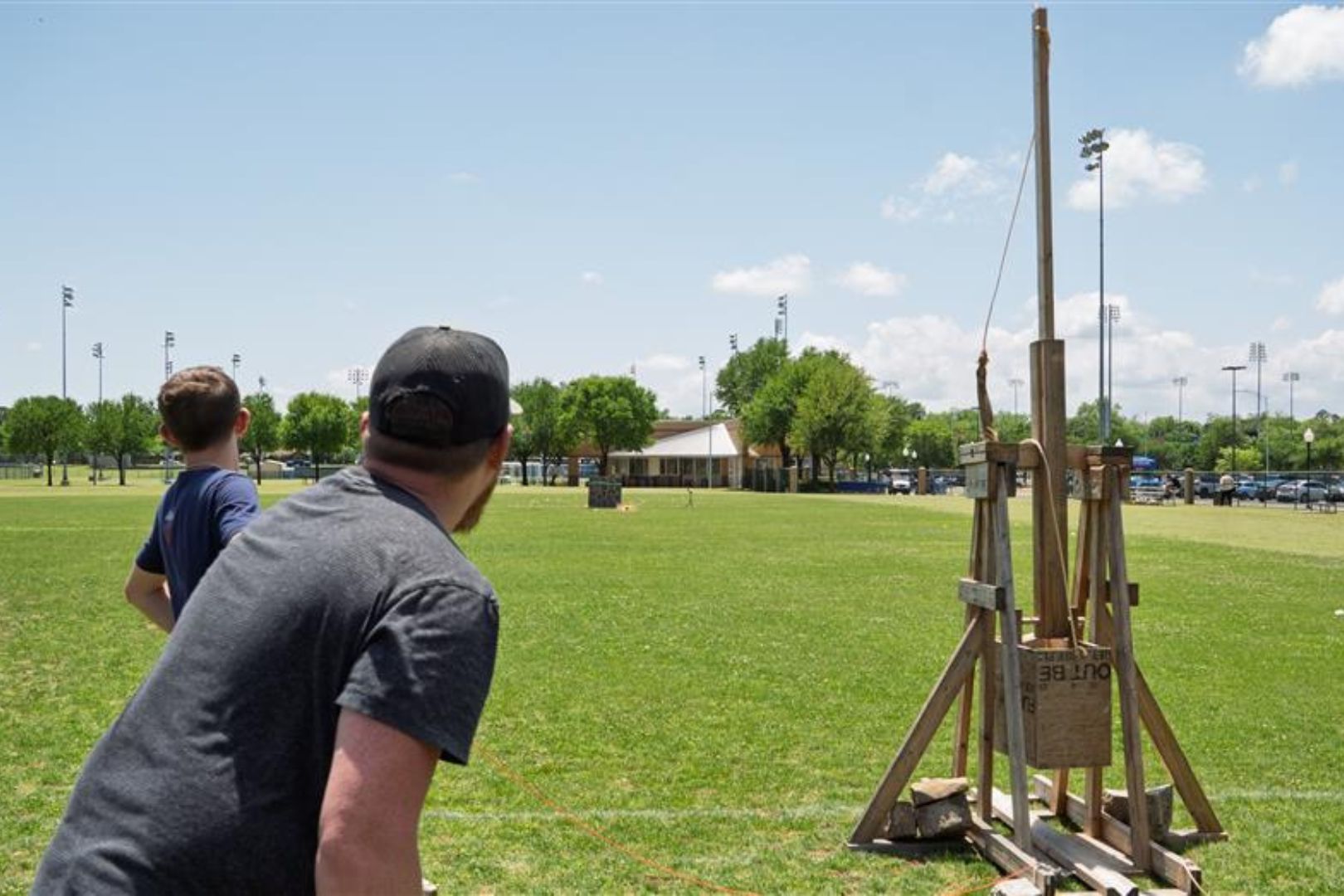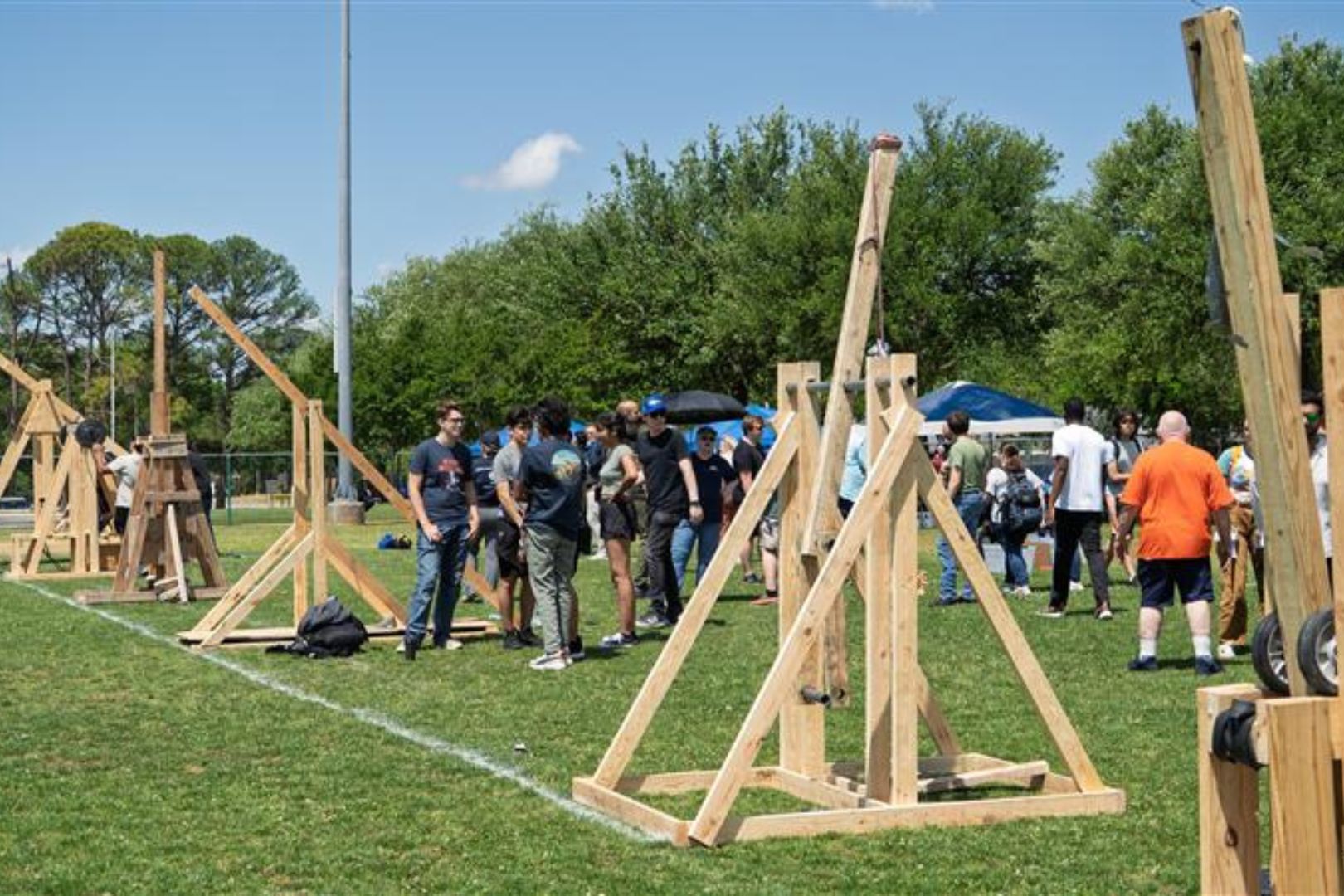
Who says learning about history must be stuffy?
University of Texas at Arlington history students threw down the gauntlet, challenging their counterparts in the College of Engineering to a contest of building and firing medieval-style trebuchets. It culminated in Wednesday's Trebuchet Challenge on the UT Arlington Intramural Fields, combining flying cantaloupes and applied learning.
"This is the power of history," said Kimberly Breuer, associate professor of instruction in the Department of History and Geography. "Students in my "Medieval Technology and Scientific Thought" course turned a class exercise into something much different and built two trebuchets based on designs for real weapons used in early English battles and the Crusades. When we invited mechanical engineering students to compete, we ended up with six teams."
A trebuchet is a mechanical device that uses a weighted counterbalance to fling projectiles long distances.
Conner Gorham, a senior history major, was the catalyst behind the competition. He and his classmate, Kyle Wagoner, decided to build a scale version of the Warwolf, believed to be the largest trebuchet ever made. In the span of about a week, the two had successfully built their weapon.
Watch CBS Texas News' report: Medieval Engineering—UT Arlington students launch trebuchet challenge
"We used historical information to stay as close as possible to how the original trebuchet was built. The only thing that isn't historically accurate is that we used screws and modern wood glue," Gorham said. "Since we built it, we wanted to test it and show it off, which led to a medieval festival and this competition.
"One of the biggest things we've talked about is that history isn't just poring over books. There are lots of fascinating things to do with history beyond reading."

The student teams fired cantaloupes from their trebuchets, seeking the longest distance. Upon impact, the cantaloupes exploded, drawing cheers from the gathered crowd, some dressed in medieval-style outfits.
"When you bring history to life, it changes your perspective. It's different when you can see it and experience it," Wagoner said.
The mechanical engineering students who competed are enrolled in Raul Fernandez's "Introduction to Engineering Design" course, which requires first-year students to design, build and test a mechanical device. When Dr. Fernandez offered the opportunity to build a trebuchet, several students took him up on it.
"I didn't want to deny students this opportunity," Fernandez said. "Even though it was a tight deadline, they came up with good ideas. The benefit of hands-on experience can never be overstated because that's where you really learn how the engineering process works and how to tweak ideas."
Mechanical engineering student Kevin Roman was one of Fernandez's students who decided to build a trebuchet.
"In high school, I built a small-scale catapult, and I thought it would be fun to take it to a larger scale," Roman said. "It's more interesting than my original class project because I can see the reality of physics and apply them to a real-world application. It helped me to have an open mind, really look at the task at hand and tackle it as efficiently as possible."
— Jeremy Agor, College of Engineering






